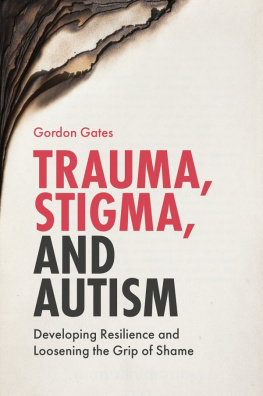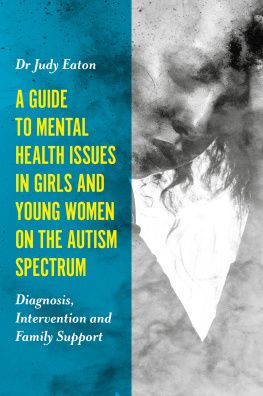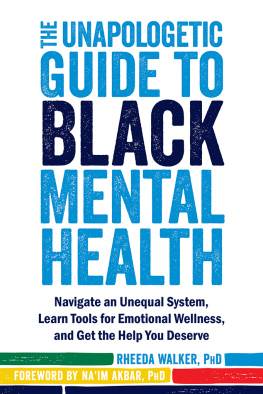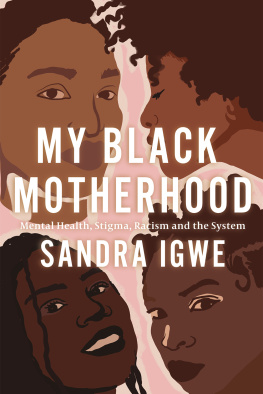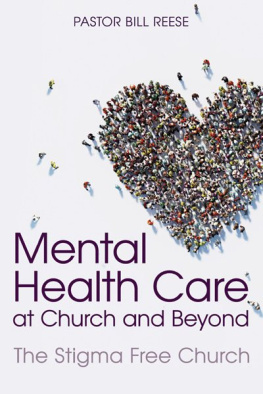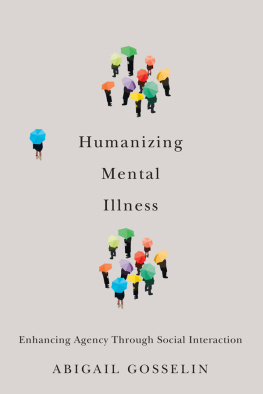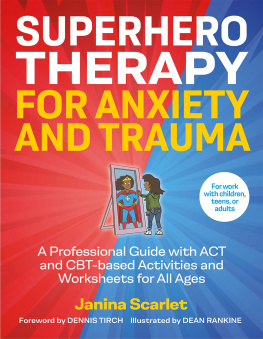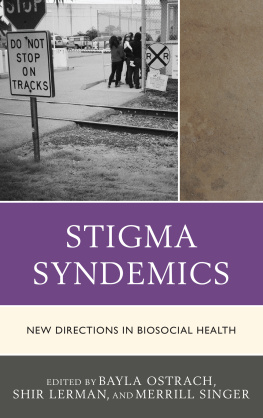TRAUMA,
STIGMA,
AND
AUTISM
Developing Resilience and
Loosening the Grip of Shame
Gordon Gates

Contents
Part A
STIGMA, AUTISM,
AND INVALIDATION
Chapter 1
TRAUMA AND AUTISTICY
Stigma is a form of trauma. It targets people on the basis of beliefs about them that have nothing to do with who they are. It undermines a persons humanity and overshadows the fullness of their identity by placing assumptions about negatively perceived qualities over openness to their actual personhood. This book is an examination of stigma and the lasting impact it can have. Although trauma is often framed in terms of a terrorizing event, it is the perceived physical and/or psychological threat to our personhood and residual self-protection that underlies much of the suffering involved. Having our humanity threatened, undermined, and devalued is fundamentally traumatic. It can shift us into a hyper-aroused state of defensive safety seeking or guarded withdrawal and self-isolation. This kind of trauma is experienced as shame. Theologian, philosopher, and counsellor John Bradshaw (1988/2005) explored shame thoroughly. He distinguished innate shame related to healthy humility and toxic shame acquired through experiences of abandonment, rejection, blame, and abuse that oppress us into believing our fundamental humanity or true self is defective and flawed (p.xvii). The repeated messages and cues of stigma have the same demeaning effect. Stigma provides a vantage point to assess the damage of shame and this perspective can help us find ways to manage the associated emotional pain.
Chronic invalidation can lead to an over-sensitive danger alarm in the bodymind waiting to be activated by the smallest trigger. We have much to learn from autism in this regard, because the humanly erosive process of chronic invalidation is constantly at work through stigma and stigmatizing micro-events that can make us feel like crawling under a rock (Robison 2007, p.5) or even aliens on this planet (Dubin 2009, p.12). Feeling judged and dismissed amplifies existing emotional regulation issues providing a model that illustrates the cycle. In this book we will work towards a better understanding of stigma for those who experience it as well as those wanting to better manage the ways they unintentionally stigmatize others. We will find ways to diminish mental health stigma by going beyond diagnosis to better appreciate how people share much in common regarding the fundamental challenges of what I call autisticy (the term will be defined in the Understanding Autism section later in this chapter). As the book goes on, we will learn more about these common struggles and how trauma in various forms can make whatever challenges we already face harder. A better understanding of stigma and autism not only provides a unique perspective on the widespread problem of invalidated humanity but also gives us helpful traction to work with this poignant difficulty. Loosening the grip of shame is possible one step at a time by managing the defensive reactions associated with invalidation trauma. Finding ways to counter everyday stigmatizing processes and reimagine stigmatizing beliefs and assumptions helps create an environment of validating acceptance that nourishes shame resilience. This book looks at the issue from both perspectives.
Stigma can be based on visibly apparent things such as skin color, gender, and overt behaviors. It can also come from concealable things like certain forms of physical and mental health, diagnostic labels, sexual preference, socio-economic status, and religion. Sometimes the most challenging forms of invalidation come from intangible things that are hard to pinpoint but can still be used to determine a person is not one of us . The stigma of autism comes from all three sources and often involves oppressive coercion to conform, as one autistic woman puts it, as if I am only worthy if I behave in a certain way that neurotypicals find acceptable (Autistic Self Advocacy Network 2012, p.350). We will look at the stigma of being different and not fitting in. We will see how certain core challenges we all experience can lead to stigma when our difficulties stand out more than normal. The book is written primarily from an Autistic perspective not only because of my own Autisticy, but because the history of autism is so intertwined with this complex form of oppression. Anyone whose life is touched by autism or who is interested in this form of personhood should appreciate the exploration this book undertakes. We can learn much about the mechanisms of stigma from autism and acquire helpful cautionary tales. Anyone whose life has been made difficult by the effects of chronic invalidation will better understand what they are dealing with. The techniques of stigma resilience and practices of self-intervention discussed can be used by anyone even though the framework was developed for people who have experienced wounding invalidation.
Different Traumas
Trauma happens when people are overwhelmed by bad things. We may not remember specific incidents, but the body remembers. When past trauma is activated, the familiar routines of life may no longer work. Usual coping mechanisms may become ineffective. Anxiety can become intense. It may no longer be possible to take simple things for granted. The degree of trauma experienced after emotionally damaging events and the corresponding challenge of recovery is associated with many factors related to vulnerability and personal resilience. These factors may include formative experiences, exposure to multiple traumas, the safety of ones current environment, sense of belonging, physical and mental health, self-care strategies, available supports, the strength of ones values and the flexibility to reassess them, ability to connect with emotional and spiritual intelligence, mindfulness, self-esteem, self-confidence, and many others. Trauma can also take many forms. The most recognizable variation of trauma is caused by overt catastrophic events such as war, assault, hostage-taking, natural disaster, terrorism, injury, near-death experiences, serious accidents or near accidents, and witnessing tragic events. This is the kind of trauma associated with PTSD (post-traumatic stress disorder) in the Diagnostic and Statistical Manual of Mental Disorders (DSM).
Trauma is not always so extreme and is not necessarily related to single catastrophic events. It can also be associated with poverty, harassment, bullying, loss and chronic invalidation. Trauma can be perpetuated by self-beratement and complicated when it involves repeated exposure over time, such as ongoing abuse, disregard, neglect, and being forced or choosing to endure a toxic or oppressive environment. Such trauma is often referred to as complex trauma. Judith Herman is often credited with first articulating this in her seminal book Trauma and Recovery (1992/2015). She specifically mentions prolonged terrors such as captivity, child abuse, and spousal abuse as sources of this kind of trauma and talks about a new diagnosis called complex PTSD. This formulation has not been officially adopted in the DSM, although a condition called DESNOS (disorders of extreme stress not otherwise specified) was proposed and rejected for the fourth edition in 1994. A more refined and specific diagnosis called developmental trauma disorder was proposed with support from the National Association of State Mental Health Directors and rejected for the more recent DSM-5 (American Psychiatric Association 2013). Bessel van der Kolk (founder of one of the first trauma centers in North America) was instrumental in both these proposals and continues to work towards greater recognition of this form of socio-erosive trauma. His ground-breaking book The Body Keeps the Score (2014) is a comprehensive and engaging account of both the psycho-physiological effects of relationship-based trauma and the growing body of eye-opening research on the impact of impoverished relationship. Meanwhile, practitioners are starting to ask themselves if they can continue to work within the bounds of the constraints of the traditional approach by not taking such trauma more fully into account in their work with patients (Rahim 2014, p.557).
Next page
